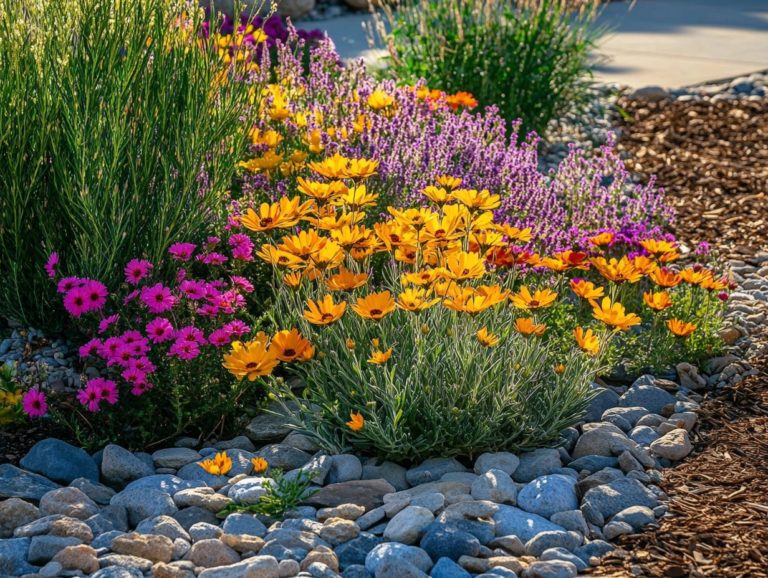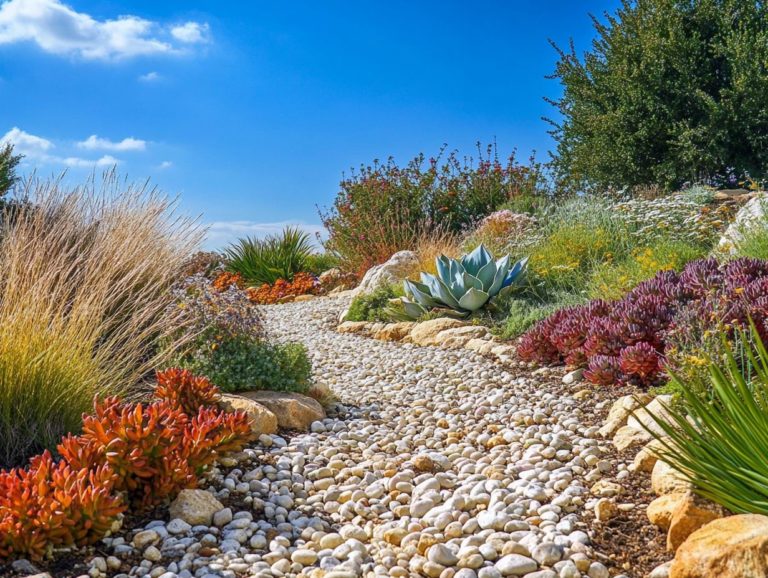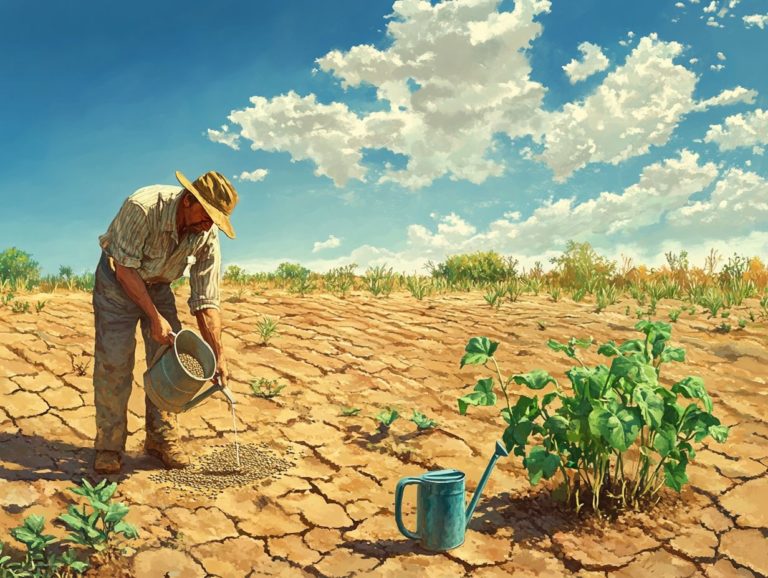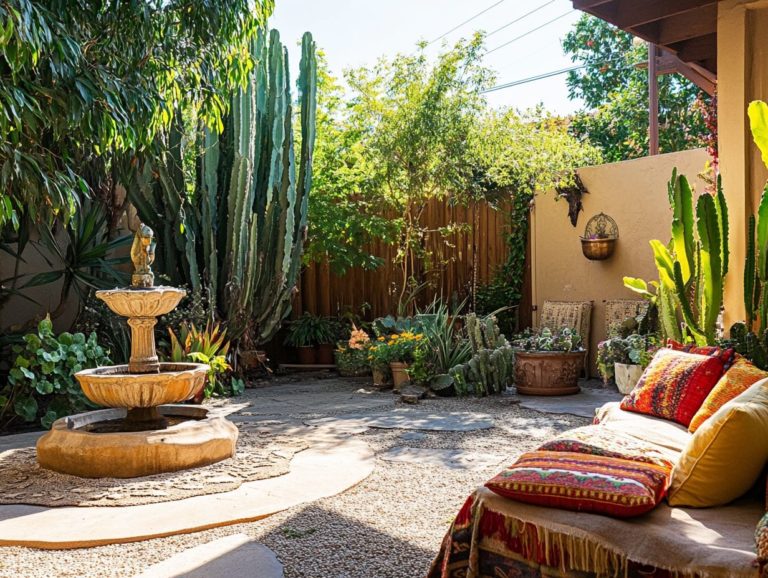Choosing the Right Soil for Drought Gardens
Drought gardening is becoming increasingly essential as climate conditions shift and water resources dwindle.
The foundation of your successful drought garden lies in the soil, which plays a crucial role in conserving water and promoting plant health. This article delves into the importance of soil in drought conditions, covering everything from the types of soil best suited for arid environments to effective methods for preparing and maintaining it.
You ll discover how to select drought-resistant plants and implement efficient watering techniques to ensure your garden thrives despite the challenges. Embrace the opportunity to create a resilient, water-wise garden that stands the test of time.
Contents
- Key Takeaways:
- The Importance of Soil in Drought Gardens
- Types of Soil for Drought Gardens
- Conclusion
- Preparing Your Soil for Drought Gardening
- Choosing the Right Plants for Your Soil and Climate
- Watering Techniques for Drought Gardens
- Maintaining Healthy Soil in Drought Conditions
- Frequently Asked Questions
- What factors should I consider when choosing the right soil for my drought garden?
- What type of soil is best for a drought garden?
- How does the climate affect my choice of soil for a drought garden?
- Can I use compost in my drought garden soil?
- What plants love dry conditions and thrive in drought gardens?
- Can I create my own soil mix for my drought garden?
Key Takeaways:
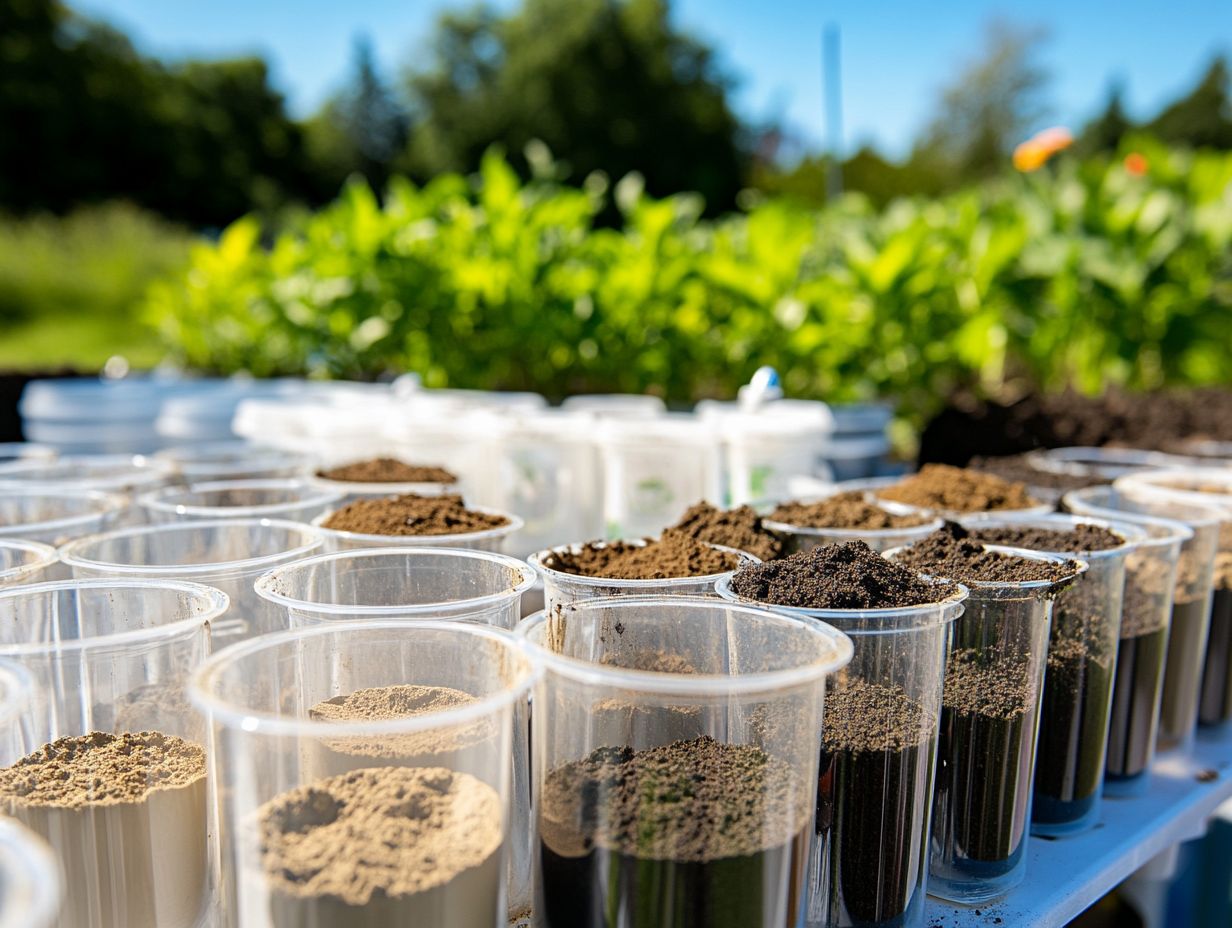
- Understanding the role of soil is crucial in water conservation for drought gardens.
- Different soil types have unique characteristics and benefits for drought gardening.
- Improving soil quality and selecting drought-resistant plants are key steps in preparing for drought conditions in your garden.
The Importance of Soil in Drought Gardens
Understanding the significance of soil in drought gardens is essential for your gardening success, particularly as climate change reshapes traditional practices. Healthy soil is fundamental to water conservation; it enhances moisture retention and supports effective drainage solutions for drought gardens that nurture drought-tolerant plants flourishing in arid conditions, making them suitable for growing plants in pots.
By enriching your soil with organic matter and appropriate amendments, you can cultivate resilient landscapes that endure dry spells and conserve precious resources. Dive into this guide to unlock the secrets of the various elements of soil that contribute to sustainable gardening, emphasizing moisture retention and the specific soil requirements crucial for thriving gardens in drought-prone areas.
Understanding the Role of Soil in Water Conservation
The role of soil in water conservation is indeed multifaceted, as it involves its structure, texture, and nutrient content to enhance moisture retention in your garden, which is essential for maintaining soil health.
Different soil types sandy, clay, and loamy each have unique abilities to hold water, which directly affects how efficiently your garden can utilize this essential resource. For example, sandy soil drains quickly but struggles to retain moisture, while clay soil can compact, preventing water from penetrating deeply.
Enriching your soil’s nutrient content with organic matter like compost not only enhances its nutrient profile but also improves its water retention capabilities. This improves plant growth and bolsters your water conservation efforts, ultimately creating a more sustainable gardening environment.
Types of Soil for Drought Gardens
Selecting the right types of soil is crucial for your drought garden’s success, as it directly influences the growth of drought-tolerant plants. Additionally, understanding how to choose drought-resistant plants for your garden will enhance the overall health of your garden.
Various soil types sandy, loamy, and clay each possess distinct characteristics that impact moisture retention and drainage. By understanding soil texture and making the necessary amendments, you can establish a solid foundation for drought gardening, enabling your plants to thrive even in dry conditions.
Thoughtful soil selection can enhance root growth and stability, cultivating a water-efficient garden that’s resilient in arid environments. Additionally, selecting suitable mulch for drought plants can further improve your garden’s drought resistance.
Characteristics and Benefits of Different Soil Types
Different soil types come with their own distinct characteristics that influence their suitability for drought gardening, including texture, structure, and moisture retention capabilities. Understanding these factors is essential when creating a balanced drought garden.
Take sandy soils, for example. Their coarse texture allows for excellent drainage, but they struggle to hold onto moisture, making them less than ideal for plants that crave consistent hydration. On the flip side, clay soils are dense and compact, capable of retaining significant moisture. However, their poor drainage can be a double-edged sword, potentially harming drought-tolerant plants if they get waterlogged.
Then there s loam a harmonious blend of sand, silt, and clay. This balanced soil provides a perfect environment for various plants, as it retains moisture while still allowing for proper drainage.
By understanding these nuances, you can choose the right soil type to optimize growth conditions and support sustainable landscaping practices.
Conclusion
In conclusion, focusing on soil quality and type is vital for creating a thriving drought garden. By applying these insights and learning how to choose drought-resistant plants, you will not only enhance your gardening success but also contribute positively to water conservation efforts. Start your journey toward a sustainable garden today!
Preparing Your Soil for Drought Gardening
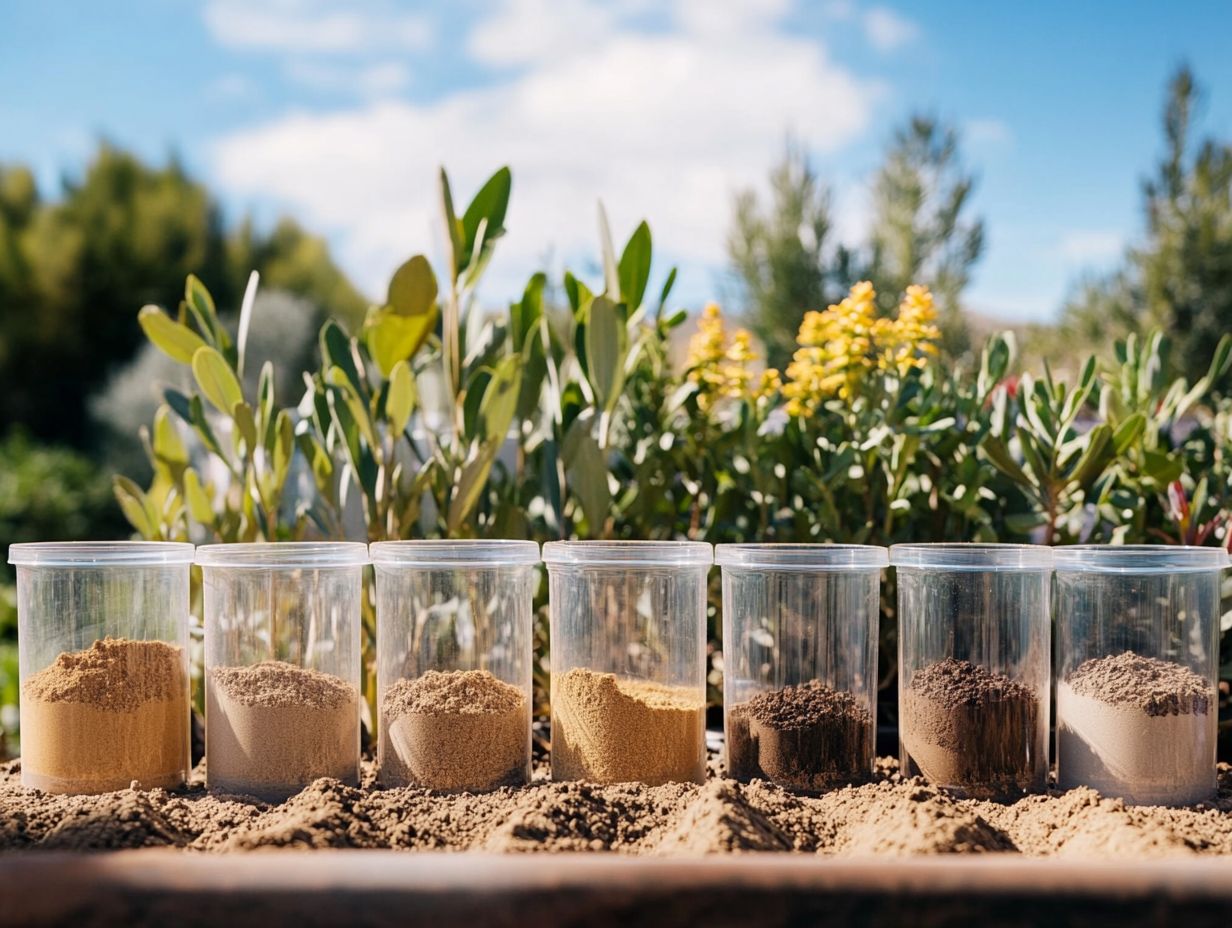
Preparing your soil for drought gardening is a crucial step that guarantees optimal health and moisture retention. Learning how to design a drought-tolerant garden enables your plants to flourish even in dry conditions.
Let’s dive into the steps you need to take. Start by conducting a thorough soil test to gain insights into the current soil structure, soil pH, and nutrient levels. With this information, you can apply the right amendments to enhance soil fertility, improve its structure, and foster better drainage.
Implementing targeted planting tips designed for drought conditions significantly enhances root growth and overall plant resilience. This creates a water-efficient garden that thrives in arid environments.
Steps for Improving Soil Quality
Improving your soil quality involves several essential steps that significantly boost soil health, moisture retention, and the vitality of plants in drought gardening, which is vital for vegetable crops.
Start by conducting soil testing to accurately identify nutrient deficiencies and pH imbalances. This allows you to make targeted amendments tailored to your soil’s needs. Once you have that assessment, enrich your soil with organic matter like compost or well-rotted manure. Adding organic matter infuses essential nutrients and enhances soil structure.
Next, consider using specific soil amendments such as crushed rock minerals or biochar to further elevate soil fertility and enhance the health of your garden.
Together, these practices enhance moisture retention and create a thriving environment for drought-tolerant plants, allowing them to flourish even in challenging conditions.
Choosing the Right Plants for Your Soil and Climate
Choosing the right plants for your unique soil and climate conditions is essential for cultivating a successful drought garden. Learning how to choose plants for drought resistance ensures that your chosen varieties truly thrive in their environment.
Drought-tolerant plants such as succulents, cacti, and native flowering plants excel in arid zones. Understanding their specific soil requirements is crucial for optimal growth. By selecting plants that align with your soil type and pH, you significantly enhance both environmental responsibility and resource conservation in your garden design.
With thoughtful plant choices, you can create a vibrant landscape that conserves water while showcasing nature s beauty, promoting a healthy ecosystem.
Factors to Consider When Selecting Drought-Resistant Plants
When selecting drought-resistant plants, consider several key factors, including specific soil requirements, water needs, and appropriate planting techniques like drip irrigation, which delivers water directly to plant roots for efficient moisture use.
Understanding your local soil type is paramount. Different plants thrive under varying conditions. For example, sandy soils drain quickly, so choose plants that can handle less moisture. In contrast, clay soils retain water but can pose a risk of root rot if drainage isn t managed properly.
Incorporating water conservation strategies, such as mulching, can significantly improve moisture retention. This allows you to water less frequently. By employing effective planting techniques such as grouping drought-tolerant plants according to their water needs and utilizing drip irrigation you can establish a sustainable garden that requires minimal maintenance.
These thoughtful considerations foster a healthier ecosystem and ensure your landscape remains vibrant and resilient, encouraging sustainable practices.
Watering Techniques for Drought Gardens
Implementing effective watering techniques is essential for cultivating a water-efficient garden that flourishes even in drought conditions.
One of the most efficient methods is drip irrigation. This method delivers water directly to the roots of your plants while minimizing evaporation and runoff. By understanding the specific water needs of various plant varieties, you can optimize your watering schedules, ensuring maximum moisture retention.
By employing these techniques, you conserve water and promote healthy growth in your drought-tolerant plants. Don’t wait start preparing your soil today for a successful drought garden!
Tips for Efficient Watering and Irrigation
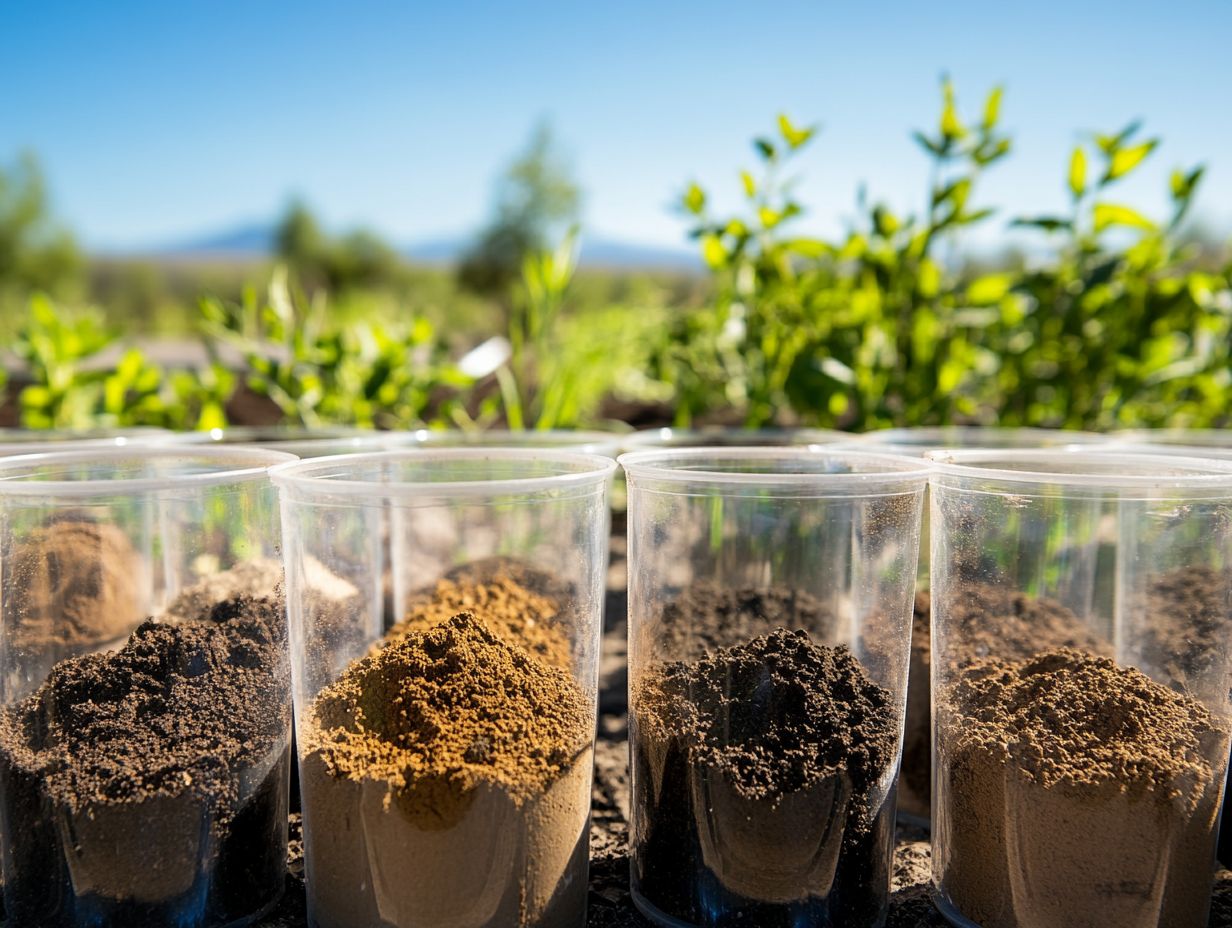
Adopting effective watering and irrigation strategies can significantly enhance the health and sustainability of your drought garden.
Using methods like drip irrigation, which delivers water directly to plant roots, minimizes evaporation and ensures efficient moisture use. Timing your watering for early mornings or late afternoons helps reduce water loss due to heat and wind.
Using techniques like mulching creates a barrier that slows evaporation from the soil, promoting moisture retention. You can create a vibrant garden that thrives!
Maintaining Healthy Soil in Drought Conditions
Maintaining healthy soil during drought conditions requires dedication to preserve moisture and enhance fertility, ensuring that your plants thrive despite limited water.
Using methods like mulching with straw and incorporating organic amendments improves soil health and keeps moisture locked in.
Regularly monitoring soil pH and texture allows you to make timely adjustments, supporting optimal plant care. Prioritizing soil health showcases your commitment to environmental responsibility and paves the way for sustainable gardening practices in challenging climates.
Strategies for Preserving Soil Moisture and Nutrients
Effective strategies for preserving soil moisture and nutrients are essential for maintaining a flourishing garden, especially in drought-prone areas.
Incorporating organic matter such as compost enriches the soil and fosters a thriving ecosystem. Using mulch acts as a protective layer, reducing evaporation and shielding the soil from extreme temperatures.
Implementing proper irrigation techniques, like drip systems or soaker hoses, ensures efficient water use, allowing moisture to penetrate deeply into the soil. Each of these methods improves soil health, boosts moisture retention, and promotes water conservation, leading to a resilient and productive garden.
Frequently Asked Questions
What factors should I consider when choosing the right soil for my drought garden?
When choosing soil for a drought garden, consider the type of plants, the climate of your region, and healthy soil’s role in drought gardening and its water retention capabilities.
What type of soil is best for a drought garden?
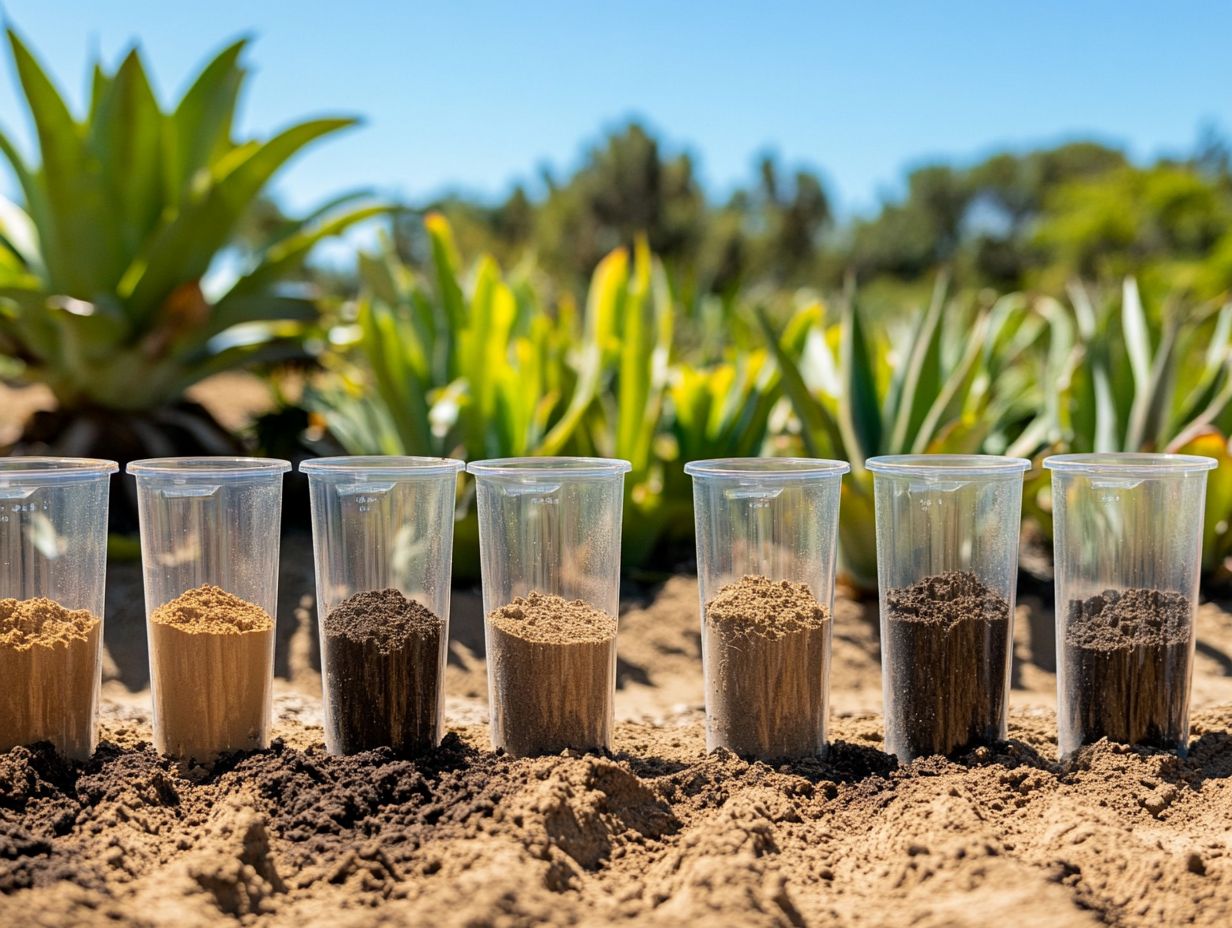
The best soil for a drought garden is well-draining and retains moisture for extended periods. For optimal results, consider establishing a drought-tolerant garden with a mixture of sandy and loamy soil.
How does the climate affect my choice of soil for a drought garden?
The climate significantly influences the soil you should use for your drought garden. In hot, dry regions, soil with high water retention is necessary, while cooler regions may benefit from well-draining soil. For more detailed guidance, check out how to create a drought-resistant garden.
Can I use compost in my drought garden soil?
Yes! Adding compost to your drought garden soil improves water retention and provides essential nutrients for your plants.
What plants love dry conditions and thrive in drought gardens?
Many plants are well-suited for drought gardens, including succulents, cacti, lavender, rosemary, and yarrow. Choose drought-tolerant plants that thrive in dry conditions.
Can I create my own soil mix for my drought garden?
Yes, you can create your own soil mix by combining equal parts of sandy and loamy soil with compost. Adding materials like perlite or vermiculite improves water retention.
Start your drought garden today and make a difference!

